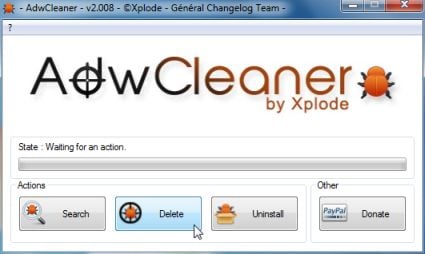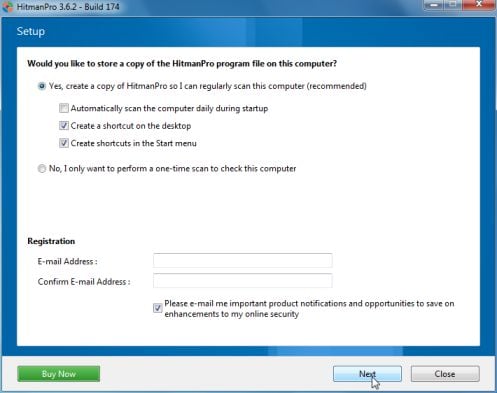Babylon is a potentially unwanted program, which is promoted via other free downloads, and once installed it will add the Babylon Toolbar, change your browser homepage and default search engine to isearch.babylon.com/.
![Babylon Toolbar [Image: Babylon Toolbar virus]](http://malwaretips.com/blogs/wp-content/uploads/2012/10/babylon-toolbar.png)
The Babylon Search will display advertisements and sponsored links in your search results, and may collect search terms from your search queries.
Babylon Toolbar got on your computer after you have installed another free software or add-on that had bundled into their installer this browser hijacker. For example, when you install Unlocker, you’ll also install the Babylon Search, set your browser homepage to http://isearch.babylon.com/ and change your default search engine to isearch.babylon.com/.However, when you uninstall Unlocker from your computer, your web browser’s default settings will not be restored. This means that you’ll have to remove Babylon Search from your favorite web browser manually.
You should always pay attention when installing software because often, a software installer includes optional installs, such as this browser hijacker.
Be very careful what you agree to install. Always opt for the custom installation and deselect anything that is not familiar, especially optional software that you never wanted to download and install in the first place. It goes without saying that you should not install software that you don’t trust.
Babylon Search and Toolbar – Virus Removal Instructions
STEP 1 : Uninstall Babylon Toolbar from your computer
- To uninstall Babylon Toolbar program from your computer, click the Start button, then select Control Panel, and click on Uninstall a program.
If you are a Windows 8 user, you can right-click on a bottom left hot corner (formerly known as the Start button) and select Control panel from there, then select Uninstall a program.
![Click on Uninstall a program [Image: Uninstall a program]](data:image/gif;base64,R0lGODlhAQABAAAAACH5BAEKAAEALAAAAAABAAEAAAICTAEAOw==)
- Seach and uninstall Babylon, Babylon toolbar on IE, Yontoo, BrowserProtect and any other programs related to Babylon LTD.
![How to easily remove Babylon Toolbar (Removal Guide) 1 [Image: Uninstall Search Babylon ]](data:image/gif;base64,R0lGODlhAQABAAAAACH5BAEKAAEALAAAAAABAAEAAAICTAEAOw==)
Please note that on some computers these programs might be renamed or missing, search for any program developed by Babylon LTD, and uninstall it from your computer.
Because Babylon Toolbar is installed with other additional programs, we recommend that you search and uninstall any other unwanted or unknown programs from your computer.
STEP 2 : Remove Babylon Toolbar from Internet Explorer, Firefox and Google Chrome
Babylon Toolbar has installed a several browser extensions, and has changed your homepage and search engine to isearch.babylon.com.
- You can download AdwCleaner from the below link.
ADWCLEANER DOWNLOAD LINK (This link will automatically download AdwCleaner on your computer) - Before starting this utility, close all open programs and internet browsers.
- Double click on adwcleaner.exe to run the tool.
- Click on Delete, then confirm each time with Ok.

- Your computer will be rebooted automatically. A text file will open after the restart.
- NEXT, double click on adwcleaner.exe to run the tool.
- Click on Uninstall, then confirm with yes to remove this utility from your computer.
STEP 3: Run a computer scan with Malwarebytes Anti-Malware
- You can download Malwarebytes Anti-Malware Free from the below link, then double click on it to install this program.
MALWAREBYTES ANTI-MALWARE DOWNLOAD LINK (This link will open a download page in a new window from where you can download Malwarebytes Anti-Malware Free) - When the installation begins, keep following the prompts in order to continue with the setup process. DO NOT make any changes to default settings and when the program has finished installing, make sure you leave both the Update Malwarebytes’ Anti-Malware and Launch Malwarebytes’ Anti-Malware checked, then click on the Finish button.
![Malwarebytes Anti-Malware final installation screen [Image: Malwarebytes Anti-Malware final installation screen]](data:image/gif;base64,R0lGODlhAQABAAAAACH5BAEKAAEALAAAAAABAAEAAAICTAEAOw==)
- On the Scanner tab, select Perform quick scan and then click on the Scan button to start scanning your computer.
![Run a Quick Scan with Malwarebytes Anti-Malware [Image: Malwarebytes Anti-Malware Quick Scan]](data:image/gif;base64,R0lGODlhAQABAAAAACH5BAEKAAEALAAAAAABAAEAAAICTAEAOw==)
- Malwarebytes’ Anti-Malware will now start scanning your computer as shown below.
![Malwarebytes Anti-Malware scanning for Babylon Toolbar [Image: Malwarebytes Anti-Malware scanning for Babylon Toolbar]](data:image/gif;base64,R0lGODlhAQABAAAAACH5BAEKAAEALAAAAAABAAEAAAICTAEAOw==)
- When the Malwarebytes scan will be completed, click on Show Result.
![Malwarebytes when the system scan has completed [Image: Malwarebytes Anti-Malware scan results]](data:image/gif;base64,R0lGODlhAQABAAAAACH5BAEKAAEALAAAAAABAAEAAAICTAEAOw==)
- You will now be presented with a screen showing you the malware infections that Malwarebytes’ Anti-Malware has detected.Please note that the infections found may be different than what is shown in the image. Make sure that everything is Checked (ticked) and click on the Remove Selected button.
![Click on Remove Selected to get rid of Babylon Toolbar [Image:Malwarebytes removing malware]](data:image/gif;base64,R0lGODlhAQABAAAAACH5BAEKAAEALAAAAAABAAEAAAICTAEAOw==)
STEP 4: Run a computer scan with HitmanPro
- Download HitmanPro from the below link, then double click on it to start this program.
HITMANPRO DOWNLOAD LINK (This link will open a new web page from where you can download HitmanPro) - HitmanPro will start and you’ll need to follow the prompts (by clicking on the Next button) to start a system scan with this program.

- HitmanPro will start scanning your computer for malware, as seen in the image below.

- Once the scan is complete,you’ll see a screen which will display all the infected files that this utility has detected, and you’ll need to click on Next to remove these malicious files.

- Click Activate free license to start the free 30 days trial and remove all the malicious files from your computer.


![Click on Uninstall a program [Image: Uninstall a program]](http://malwaretips.com/blogs/wp-content/uploads/2013/03/uninstall-a-program-windows.jpg)
![How to easily remove Babylon Toolbar (Removal Guide) 1 [Image: Uninstall Search Babylon ]](http://malwaretips.com/blogs/wp-content/uploads/2013/02/search-babylon-uninstall.png)

![Malwarebytes Anti-Malware final installation screen [Image: Malwarebytes Anti-Malware final installation screen]](http://malwaretips.com/blogs/wp-content/uploads/2013/01/malwarebytes-installation.jpg)
![Run a Quick Scan with Malwarebytes Anti-Malware [Image: Malwarebytes Anti-Malware Quick Scan]](http://malwaretips.com/blogs/wp-content/uploads/2013/01/malwarebytes-quick-scan.jpg)
![Malwarebytes Anti-Malware scanning for Babylon Toolbar [Image: Malwarebytes Anti-Malware scanning for Babylon Toolbar]](http://malwaretips.com/blogs/wp-content/uploads/2013/01/malwarebytes-scan.jpg)
![Malwarebytes when the system scan has completed [Image: Malwarebytes Anti-Malware scan results]](http://malwaretips.com/blogs/wp-content/uploads/2013/01/malwarebytes-scan-results.jpg)
![Click on Remove Selected to get rid of Babylon Toolbar [Image:Malwarebytes removing malware]](http://malwaretips.com/blogs/wp-content/uploads/2013/01/malwarebytes-virus-removal.jpg)














Babylon came in unbidden and unexpected on the back of another free and legitimate piece of software I was trying to install. It inhibited the original installation and then took over as my browser of choice, etc. I uninstalled the core program via my Add/Remove Programs (I am running XP) but am left with a stubborn Babylon Toolbar. It is so far not interfering or trying to reinstall the whole Babylon program but I want it off my machine altogether. Is it my imagination that whether I use IE or Chrome, online linking is now snailpace? This could be SA broadband limitations but could it be Babylon trying to inhibit my use of other browsers? Any advice welcome. Thanks! Sandy.
Thanks very much – adwcleaner worked like a bomb